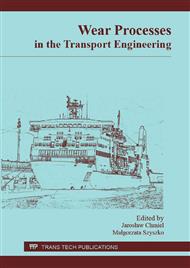p.21
p.31
p.41
p.51
p.61
p.71
p.81
p.91
p.101
The Evaluation of the Cavitational Damage in MgAl2Si Alloy Using Various Laboratory Stands
Abstract:
Evaluation of cavitation erosion resistance of is carried out by using various testing stands, that differ by the way of cavitation excitation and its intensity. These various testing conditions have led to a standardization of some part of laboratory stands, that in turn allows a direct comparison of results obtained in different laboratories. The aim of this study was to determine the course of cavitational destruction of MgAl2Si alloy samples tested on three different laboratory stands. The research was conducted on a vibration stand according to ASTM G32, where cavitation is forced by the vibrating element; in the cavitation tunnel reflecting actual flow conditions, and on a jet impact stand- simulating the impact microjet in the final phase of the cavitational bubbles implosion. Each laboratory stand has given a different course of cavitational destruction.
Info:
Periodical:
Pages:
61-70
Citation:
Online since:
July 2016
Authors:
Keywords:
Price:
Сopyright:
© 2016 Trans Tech Publications Ltd. All Rights Reserved
Share:
Citation:


